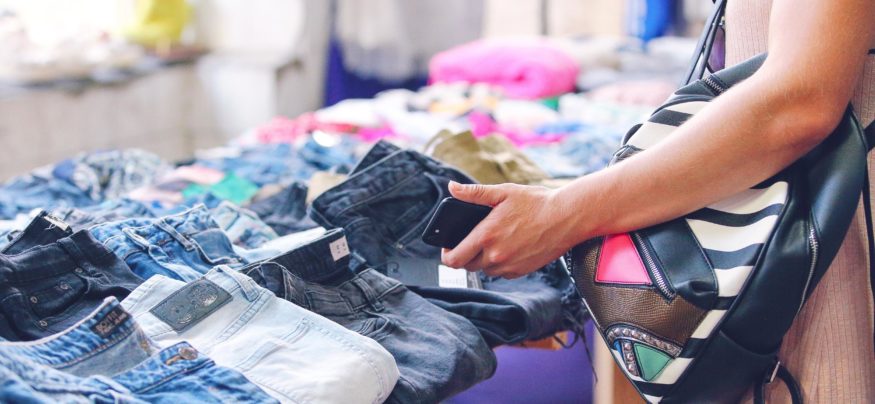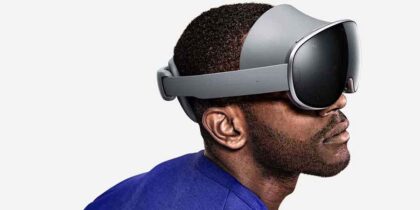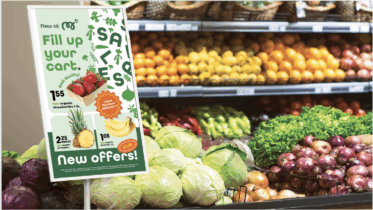In this News Insight, ReadWrite looks at the latest trends in retail IoT. For a deeper dive into creating a retail IoT strategy, download our white paper on the future of the shopping experience. —Samsung Insights editorial team
Internet of Things is transforming and revolutionizing every aspect of our lives. Be it leisure, business, retail or healthcare, almost every industry is settling to adopt new technologies and IoT is no exception. According to McKinsey an estimated of 20 to 30 billion connected devices will be available by 2020 with a total worth of $17 billion.
The above statistics clear all the doubts regarding the adoption of IoT in various industries. The growth seems to be undiminished and the overall adoption will be on par. With the competition on the rise, retailers are striving to take necessary steps to offer unique shopping experience and be more profitable, unique and efficient.
There is a lot to discuss on IoT in retail, but first, let’s have a brief overview of what Internet of Thing is all about.
What is the Internet of Things (IoT) and Use in Daily Life?
When we talk about the Internet of Things, it is the term used to describe Machine-to-Machine connectivity, where hardware devices and sensors interact with each other on their settings and whereabouts.
Knowingly or unknowingly, many of us have used IoT devices or seen it somewhere. For instance, Nest Thermostat is widely adopted by homeowners to set the temperature at the desired level. After reaching the set temperature, it will turn off automatically, saving you cost on electricity.
Moreover, IoT devices have been widely integrated into home appliances such as air conditioners, refrigerators dryers, ovens and what not.
Talking about the retail sector, IoT allows retailers to track customer behavior and collect data to use it in the future for business decisions. If you are looking forward to implementing IoT in your retail business, make sure to go through this article to know what IoT has to offer to the retailers.
IoT in Retail Industry
Before we discuss what is in IoT for retailers, let’s have a brief overview of benefits reported by early adopters.
- 77% of retailers see IoT as a mean to change the customer’s experience
- 89% of early adopters in retail benefited from the insights about customer preferences and behaviors from an Internet of Things.
- 77% of early adopters of IoT in retail offered better opportunities to interact with new partners in delivering products and services to the customers.
Digital Signage to Reach Consumer Device
With the rise in online shopping trend, retail has been largely affected by the way consumers are been affected. People tend to buy more online because the goods are offered at a cheap price. Moreover, comparison-shopping is also one of the reasons to shop online.
Due to this, the traditional retailers are prone to a number of challenges. With the ability to save some money, convenience, and comparison-shopping, people still need the help of sales assistant to save some time in researching the goods they tend to purchase.
The retail war is increasing at a rapid pace and brick and mortar shop owners have to set the prices to match online prices. This is quite a challenging task for traditional retailers to attract customers to the store.
IoT can rescue in resolving this issue. For instance, the traditional retailers can incorporate digital signage that connects with social networks and customers feedback for the customers in the store. It would help customers to view the information about the product instead of using a mobile device.
Digital signage as discussed before can also be helpful in displaying related goods, which might be of customer’s interest. Moreover, it can lead the customers in the direction of goods that would complement their purchase.
Another aspect of marketing is to understand the customers’ behavior. To attract more customers, an advertisement can be displayed in the mobile phone’s notification bar when they pass the store. Retailers can also use this feature for the customers who are present in the store by displaying the products in real life and introduce them in the best possible way through sales assistant.
Sales assistant, on the other hand, can check whether the product is available in stock and complete the transaction seamlessly. This is where IoT can be helpful, offering sales assistant to check the availability of product instore through their smartwatch.
The smartwatch is connected to the database of all the products connected to the sensor. Moreover, the sales assistant can also show how the product works using a tablet. In the end, sales assistant could use the same tablet to complete the transaction in no time.
Directing Customers to Locate Goods
Retailers have to employ staff to assist customers with all that is present in the store. Supermarkets are flooded with products and searching for specific product is not an easy task. This means that customers will have to spend much of their time in the supermarket to search for products they need.
However, IoT can help save the time of customers as well as retail owners to save money by hiring extra staff. For instance, by equipping the store with sensors can assist sales person and customer to locate a specific product. Moreover, digital displays with the ability to read sensors can inform the customers about the product description, its benefits and in case of the food item, the nutritional level.
In case of food items, many of them have short shelf life. IoT can prove to be helpful by ensuring that the due date is correct before delivering it to the customer.
Ecosystem Opportunities
Most of the home improvement, general merchandise, and electronics retailers are opting for home automation or smart home sections in their store. Not only IoT is needed by enterprises, but open the opportunities for general consumer as well.
Retailers are already availing this opportunity to be players in the ecosystem with service support, sales support and automated orders generated by IoT sensors in consumers’ homes. For instance, Amazon is currently working on the order method of choice for anything you might ask Alexa.
Conclusion
In this technological era, retailers need to understand the importance of implementing the IoT to stay ahead of the competition, grow revenue and build customers base. However, if you are not well versed in the technology, many IoT Solution providers will help you devise the strategy, plan it and deploy it.
The post Internet of Things in Retail: What’s in it for Retailers appeared first on ReadWrite.
This article was written by Ray Parker from ReadWrite and was legally licensed through the NewsCred publisher network. Please direct all licensing questions to legal@newscred.com.
Looking to leverage IoT in your retail footprint. Find out how data-driven pop-up stores can help you grow and stay nimble.
![]()








